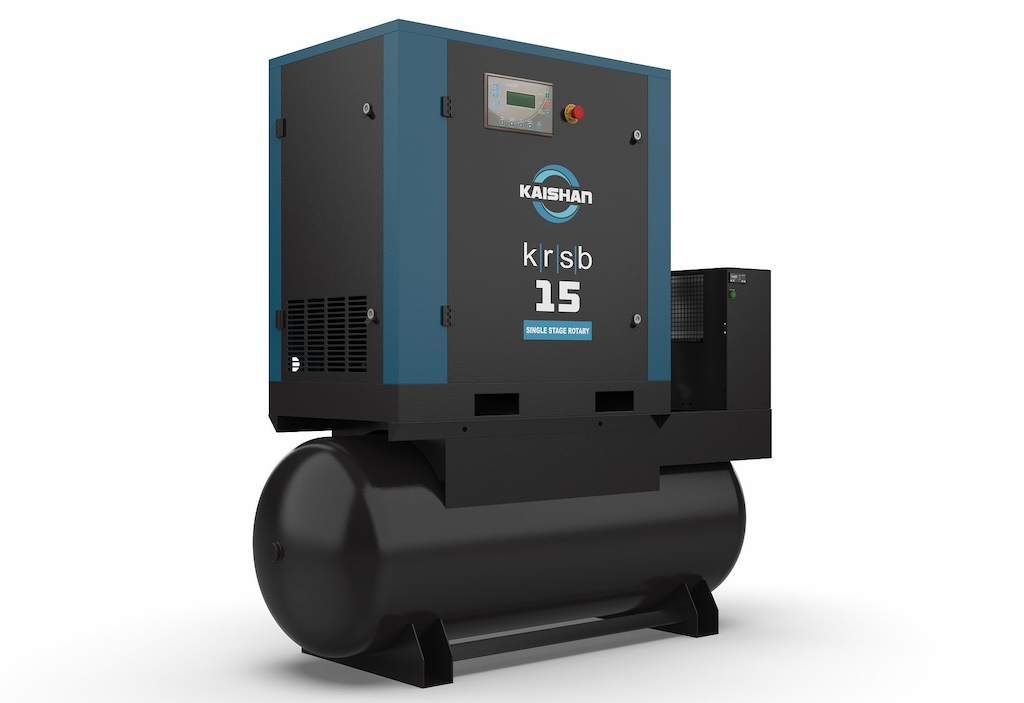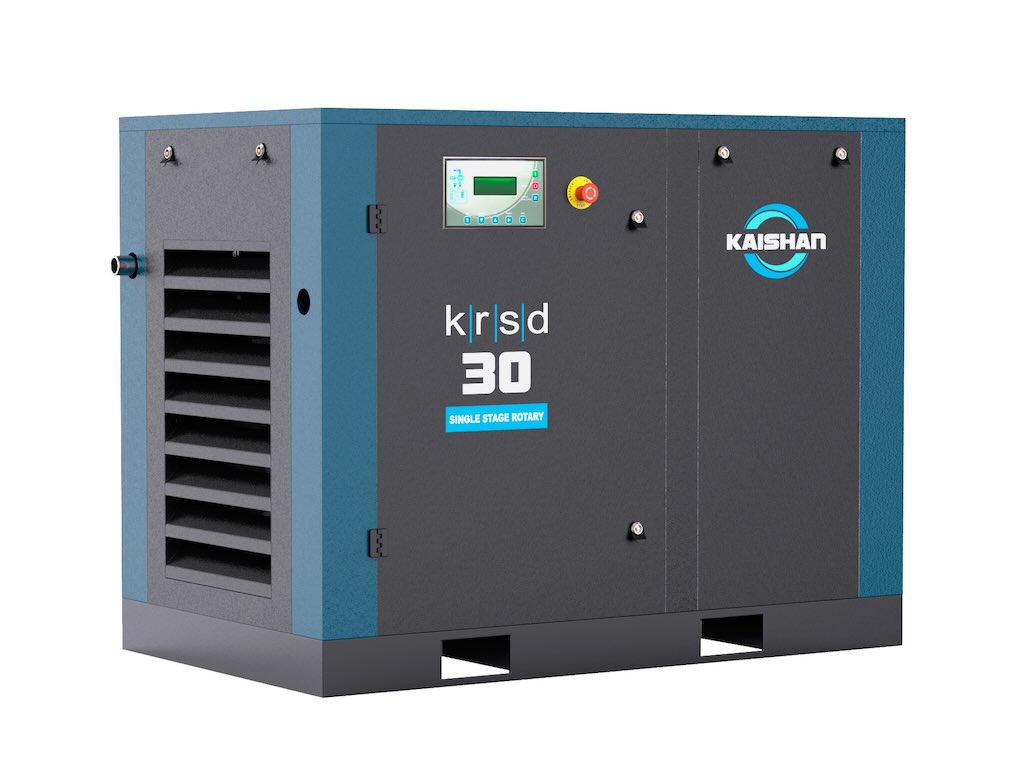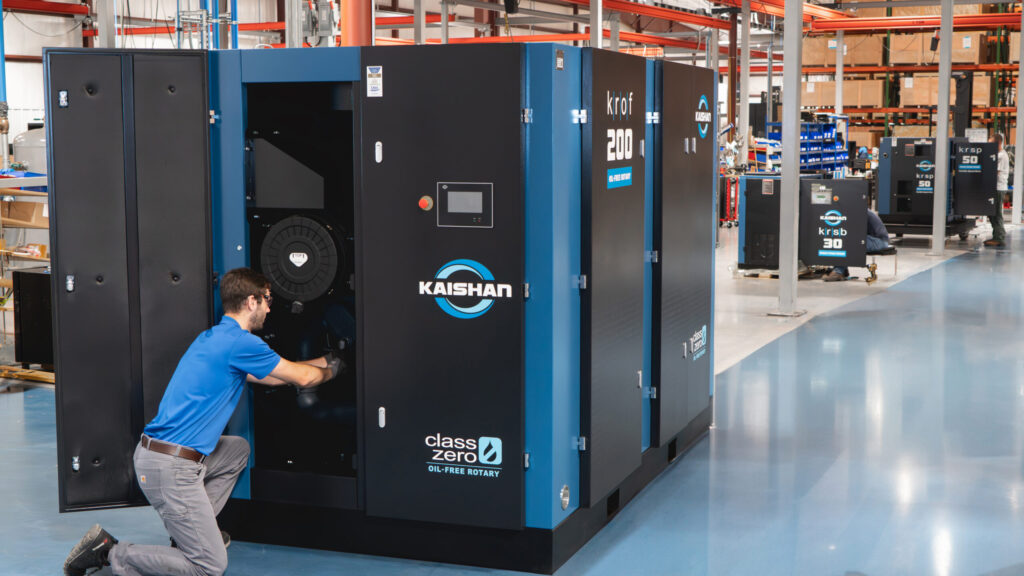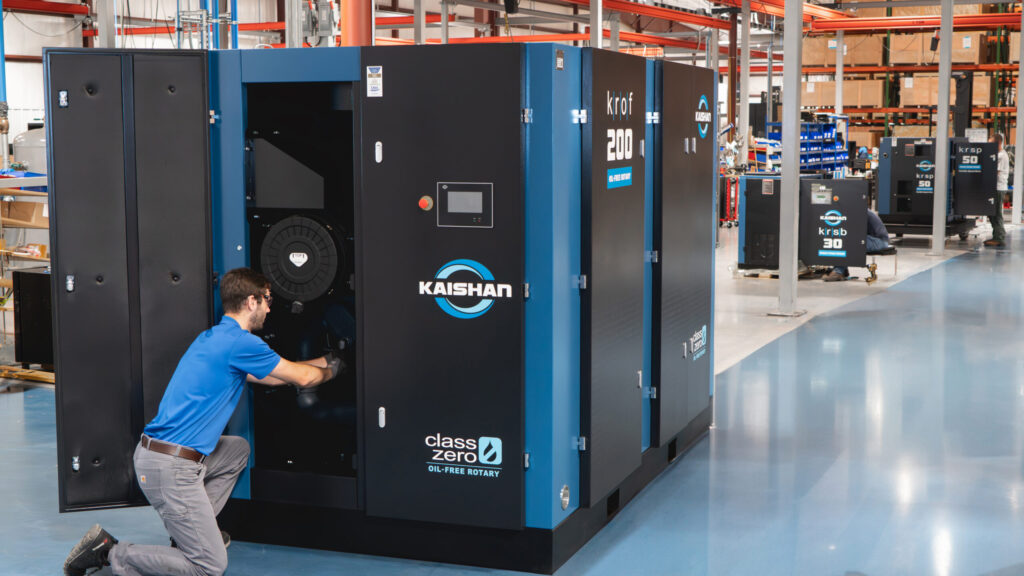Upcoming DOE standards will require new testing

The U.S. Department of Energy (DOE) is rolling out new standards for compressed air energy management that are expected to reduce costs and improve system efficiencies. Scott Barker, a marketing leader with Quincy Compressors who focused on rotary compressor new product development, discussed with Plant Engineering how the standards were developed, what they will mean for plant managers and how new technology will intersect with these standards:
Plant Engineering: The issue of air compressor efficiency often gets overlooked, including by regulators. How did the new Department of Energy rules around compressor efficiency evolve?
Barker: In an effort to conserve the energy resources of the nation, the DOE chose to include compressors, as covered equipment, in order to carry out the purposes of Title III of the Energy Policy and Conservation Act of 1975, as amended (42 U.S.C. 6291).
From 2012 to 2016, the DOE published multiple Notices that included: proposed rulemaking, proposed development, proposed determination of coverage and public meetings. During the public meetings, the DOE discussed and received comments on the framework document. On November 15, 2016, DOE published a final rule where they included comments received from interested parties in response to the proposals presented.
Plant Engineering: What will be the impact on compressor companies such as Quincy in the manufacturing of compressors? How will those rules impact your plant operations?
Barker: Compressors companies will feel an immediate financial impact in the process of complying with the new test procedures. All compressors, new and old, will need to be tested or retested according the new guidelines. The new rules directly impact the measurement equipment, test conditions and configuration of the unit under test, data collection, representations requirements, and enforcement provisions for the compressors within the scope of this final rule. The sampling plan is intended to give DOE reasonable assurance that any individual unit distributed in commerce is at least as efficient as its basic model rating.
Plant Engineering: What are the key issues for compressor users, particularly in the area of efficiency?
Barker: For compressor consumers, it is very difficult and sometimes impossible to accurately compare the efficiency of two similar machines from two different manufacturers. Major manufacturers publish performance at different rated pressure making it very difficult for the average consumer to quickly compare two models against each other.
The compressor industry widely utilizes ISO 1217 as its standard method for acceptance testing. Allowable tolerances can range from four to eight percent when utilizing this standard.
The new DOE standards and procedures will provide a universal standard to quickly compare the efficiency of two different machines. It also removes the traditional tolerances, replacing it with a more conservative sampling statistic. For package isentropic efficiency, this is represented as the lower of: (1) the mean of the test sample; and (2) the lower 95% confidence limit (LCL) divided by 0.95.
For compressor users, this results in a new method for directly comparing compressor efficiencies and more conservative ratings than that of the current industry standard.
The full standard can be found here:
Plant Engineering: What is the impact on the current install base? What should manufacturers do to become more efficient even without new equipment installations?
Barker: The new law provides no impact on the current install base. Efficiency gains in existing installations are generally found by investigating the following:
- Pressure reduction
- Increasing air receiver storage
- Reducing artificial demand, such as leaks
- Networking multiple compressors
- Reducing pressure drop in the distribution system.
Plant Engineering: Condition monitoring and sensors play a much bigger role in compressor management and maintenance today. What are some ways data management is being used to improve operations?
Barker: Real-time monitoring and alerts are now becoming common in the industry. Cellular connectivity which monitors service intervals, alarms or alerts, and energy consumption are now commonly available and easily accessible. With this data, compressors that are oversized can be identified for energy savings opportunities while also improving the reliability of a system with a properly sized air compressor.
How an air compressor uses energy
A few quick facts on air compressors and energy:
- Of the lifetime cost of an air compressor, 76% is electricity
- An air compressor uses an electric motor or gas engine to take in air at one condition and release it at an increased pressure to power a range of industrial or commercial equipment.
- Air compressors use about 6% of all motor-driven electricity in the industrial sector.
- Energy-efficient air compressors cost less to operate.
- The new standards established in 2016 set requirements for lubricated rotary compressors, not unlubricated rotary compressors or reciprocating compressors.
Courtesy: Quincy Compressors



